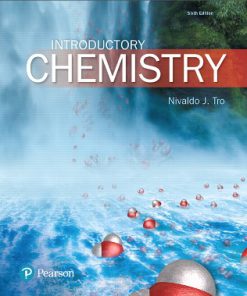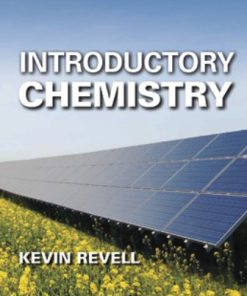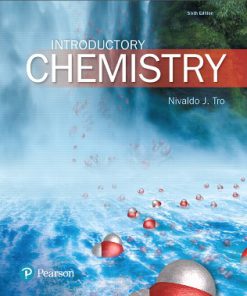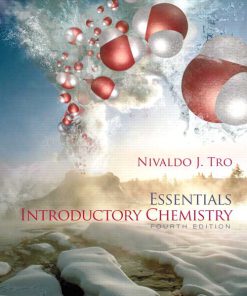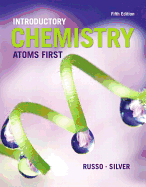Test Bank for Introductory Chemistry & SaplingPlus for Introductory Chemistry, Unbnd/Psc Edition, Kevin Revell
$35.00 Original price was: $35.00.$26.50Current price is: $26.50.
Test Bank for Introductory Chemistry & SaplingPlus for Introductory Chemistry, Unbnd/Psc Edition, Kevin Revell,
Instant download Test Bank for Introductory Chemistry & SaplingPlus for Introductory Chemistry, Unbnd/Psc Edition, Kevin Revell pdf docx epub after payment.

Product details:
- ISBN-10 : 131919575X
- ISBN-13 : 978-1319195755
- Author; Revell
Building a Foundation with an Integrated Learning Experience. At its core, Introductory Chemistry is the result of a unique author vision to develop a robust combination of text and digital resources that motivate and build student confidence while providing a foundation for their success. Kevin Revell knows and understands students today. His thoughtful narrative/video/interactive program works seamlessly to provide the most accessible and engaging set of resources for introductory chemistry available. The same author voice is mirrored in all print and digital content, allowing students flexibility and ensuring a fully supported learning experience—whether using a book or going completely digital!
Table Of Contents:
Taxol
Section 1.1 Chemistry: Part of Everything You Do
Describe the impact of chemistry on a variety of other fields.
Section 1.2 Describing Matter
Describe the difference between composition and structure.
Differentiate between elements, compounds, homogeneous mixtures, and heterogeneous mixtures.
Describe the three phases of matter.
Compare and contrast physical and chemical properties and physical and chemical changes.
Section 1.3 Energy and Change
Define heat energy in terms of the motion of particles.
Describe the relationship between the potential energy of a system and its potential for change.
Section 1.4 The Scientific Method
Describe the key components of the scientific method
Differentiate between a hypothesis, a theory, and a scientific law.
Chapter 2:
Measurement
A Strange Death
Section 2.1 Measurement: A Foundation of Good Science
Convert between standard and scientific notation, and solve multiplication and division problems involving scientific notation.
Describe the quality of measurements using the terms accuracy and precision.
Identify significant digits in a measured number, and measurements to an appropriate number of significant digits, and apply the rules for significant digits to simple calculations.
Section 2.2 Unit Conversion
Perform unit conversions using the factor-label method.
Section 2.3 Density: Relating Mass to Volume
Relate the density, mass, and volume of a substance.
Section 2.4 Measuring Temperature
Convert between Celsius, Fahrenheit, and Kelvin temperature scales.
Chapter 3:
Atoms
Mercury Contamination from Small-Scale Gold Mining
Section 3.1 Atoms: The Essential Building Blocks
Describe the development of atomic theory and its key observations about atoms. Apply the [CT1] [KR2] law of conservation of mass to solve mass problems related to chemical reactions.
Describe chemical changes using atomic theory.
Section 3.2 The Periodic Table of the Elements
Explain [KR3] the organization of the periodic table.
Section 3.3 Uncovering Atomic Structure
Describe the behavior of charged particles.
Explain [KR4] how the discovery of the battery and Rutherford’s gold foil experiment shaped our understanding of atomic structure.
Describe the relative mass and charge of protons, neutrons, and electrons and their arrangement within an atom.
Section 3.4 Describing Atoms: Identity and Mass
Relate the number of protons to atomic number and the sum of nuclear particles to mass number.
Describe the nuclear structure of isotopes and calculate average atomic mass from a distribution of isotopes and relative abundances.
Differentiate between mass number and average atomic mass.
Section 3.5 Electrons—A Preview
Contrast the description of electrons in th[CT5] e Bohr model and the quantum mechanical model.
Identify the overall charge of an atom or ion based on the number of protons and electrons.
Chapter 4:
Light and Electronic Structure
Edging toward Solar Energy
Section 4.1 The Electromagnetic Spectrum
Qualitatively and quantitatively describe the relationships between the wavelength, frequency, and energy of electromagnetic radiation.
Section 4.2 Color, Line Spectra, and the Bohr Model
Describe line spectra, the Bohr model, and how the two are related.
Describe the absorption or emission of light as a function of electron transitions.
Section 4.3 The Quantum Model and Electron Orbitals
Describe Heisenberg’s uncertainty principle and the wave nature of electrons.
Identify the number of orbitals and the maximum electron capacity of the s, p, d, and f sublevels.
Correlate each primary energy level with the available sublevels.
Section 4.4 Describing Electron Configurations
Write electron configurations for atoms and ions, using either full notation or noble-gas shorthand.
Identify the inner, outer, and valence electrons in an atom or ion.
Apply the octet rule to explain the exceptional stability of the noble gases.
Section 4.5 Electron Configuration and the Periodic Table
Use the periodic table to quickly identify the highest occupied energy level and sublevel of an element.
Use the periodic table to identify the number of valence electrons for main-group elements.
People also search:
introductory chemistry & saplingplus for introductory chemistry
introductory chemistry & saplingplus for introductory chemistry pdf
introductory chemistry & saplingplus for introductory chemistry ebook
introductory chemistry ebook
saplingplus for introductory chemistry pdf





